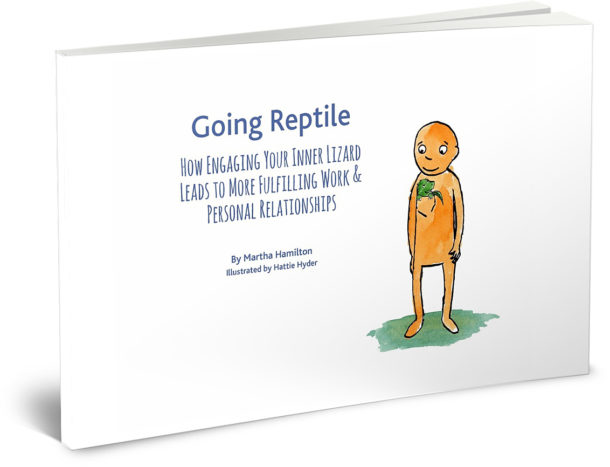Stress: a state of mental or emotional strain or tension resulting from adverse or very demanding circumstances.
In my last post, we explored an acronym that is increasingly used to describe life in the 21st Century: VUCA, which stands for Volatility, Uncertainty, Complexity and Ambiguity. For most of us, VUCA leads to stress. How could it not? When we’re in an unstable environment, our hard-wired response is stress, and each of us handles stress differently.
You can look at stress response from a lot of angles. I call it “Going Reptile,” because stressful situations often cause us to lose access to our pre-frontal cortex and start to be driven by our “reptilian” and “mammalian” brains. This is the classic “fight, flight, freeze, fawn” behaviors that allowed our ancestors to survive in harsh, life-threatening environments.
But as our pre-frontal cortex access is diminished, and our inner lizard takes over, we lose precisely the capacities that we need in order to navigate a VUCA world. We need all of our capacities online. Yet, for most of us, we’re often unaware that this very natural process has been kicked off in us. Were we running from a bear in the woods, this would be a good response. But with our spouse or in a work crisis? Perhaps not so helpful.
We’re wired to react… until we get to know how reactivity works in us, at a subtle level. Then it begins to shift. The upside to learning more is becoming more clear and more powerful.
There are four primary ways reactivity shows up, with more subtle variations under each of the four.
- Fight: Aggression in its many forms
- Flight: Withdrawal or escape
- Freeze: Shutting down
- Fawn: Becoming eager to please
As we navigate VUCA environments, this gets tricky. It’s relatively easy to see and recognize when someone is stressed and gets blatantly aggressive. It’s harder to recognize when someone’s reaction shows up as schmoozing or making sure that they are essential. They may be equally as stressed and reactive – or more. And, whether or not we recognize what is happening, access to their pre-frontal cortex is diminished. It’s even harder to recognize in ourselves, yet we’re in the same dilemma – not having access to the very capacities that are needed in the moment.
The downside of not recognizing what is happening with ourselves and those around us is obvious. We cannot address that which we cannot see, even when what’s happening has significant impact.
The environment: Volatile, Uncertain, Complex and Ambiguous (VUCA)
- Stress: The response or tension that follows in the individual
- Result: Decreasing access to the very capacities that are needed to address the situation
- Going Reptile Style: HOW that response or tension shows up (recognition)
When we can recognize the style of Going Reptile, we then have the opportunity to begin to address the situation.
If we mistake a reptilian response for panache, having it together, brilliance or coolness, we, at best, inadvertently miss a significant opportunity. At worst, we plug along with substantially less than the full brainpower needed to fully address the situation (diminished pre-frontal cortex access.)
The benefits to seeing and recognizing are significant. And, it may take some intestinal fortitude to be willing to see what we, at some level, don’t really want to see.

